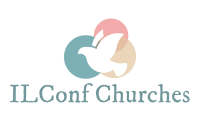gohighlevel price can be a determining factor in how successful your business will be. Many businesses, particularly those that are just getting started, often have limited funds yet need to secure quality products and services. By learning more about what factors go into HighLevel pricing models, you can make informed decisions about where your money is being spent.
The Types of HighLevel Pricing Strategies
There are a variety of high-level pricing strategies available for businesses of any size. Each type of pricing model has its own benefits and disadvantages, so you should carefully consider which one works best for your budget and the type of product or service you are offering. Common pricing strategies include:
- Fixed pricing – This refers to charging the same rate regardless of product demand or fluctuations in the market.
- Dynamic pricing – This involves regularly adjusting prices based on customer demand and competitor prices.
- Modified pricing – This usually includes discounts for bulk orders or loyalty programs.
- Freemium pricing – This model involves offering basic features at no cost and premium features at an additional fee.
- Pay-per-usage pricing – This model requires customers to pay for each use of a product or service.
Each of these pricing models has its own advantages and drawbacks depending on the type of business you are running. Understanding the different types of pricing strategies can help you choose the most appropriate option for your particular needs.

Factors That Impact HighLevel Price
It is important to understand the factors that can impact HighLevel price. These can include things like demand for a product or service, market conditions, and competition. For example, if a product is in high demand, the vendor may charge a higher price to ensure they are making a profit. However, if the market is saturated with similar products or services, the vendor may reduce the price to remain competitive.
Other factors that can influence HighLevel price include production costs, supply chain management, and overhead expenses such as marketing and advertising. All of these can drastically affect the price of a product or service and should be taken into account when setting a price.
Tools To Help With HighLevel Price
Fortunately, there are a number of tools available to help businesses make sense of their high-level pricing. By utilizing these tools, businesses can gain insight into the factors that are influencing their pricing and determine the most appropriate price point for their products and services. Popular tools in this area include pricing calculators, A/B testing software, and analytics platforms.
These tools provide valuable data that can be used to inform pricing decisions. They can also enable businesses to track the effectiveness of their pricing models and adjust them accordingly. As a result, businesses can be confident that their prices are in line with the market and that they are maximizing profitability.
Cost vs. Value
Finally, it’s important to remember that HighLevel price isn’t only about the cost. It’s also about the value that the customer is getting from the product or service. Quality, customer service, and reputation all factor in to how much a customer is willing to spend on a product or service.
By focusing on delivering high quality products and services along with outstanding customer service, businesses can increase their perceived value and potentially charge higher prices for their offerings. Customers may be willing to pay a premium for superior quality and excellent customer support.
Understanding GoHighLevel price is essential for businesses of any size. By considering the factors that influence pricing strategies, researching tools to help inform pricing decisions, and keeping the value offered to the customer in mind, businesses can set prices that maximize revenue while also providing value to their customers.

